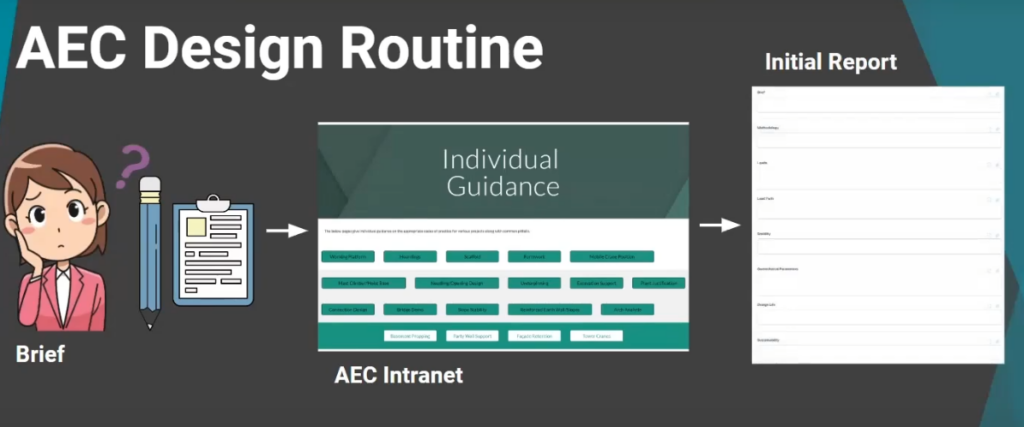A well-structured temporary works design process is crucial for delivering high-quality temporary works design and demolition engineering solutions.
We use a structured process throughout the company to define and understand the complexities of the projects to consistently deliver safe and efficient design solutions.
Recently, one of our junior engineers outlined the process when speaking to a group of final-year degree students weighing up their options for entering the construction industry.
Design Process For A Junior Temporary Works Engineer
Understanding the Project Brief
The design process starts with an initial briefing.
This crucial first step lays the foundation for the entire process. Our engineers are provided with a detailed brief outlining the specifications of the project at hand, along with additional relevant information that aids in comprehending the scope and requirements of the work.
The initial briefing is not just a one-way flow of information. Instead, it’s an interactive process where engineers can clarify doubts, ask questions, and seek additional information.

This approach ensures that our team starts on a solid footing, equipped with a clear understanding of what needs to be achieved.
After receiving the brief, engineers spend considerable time reviewing the information provided.
They familiarise themselves with the project specifics, such as client requirements, project deadlines, safety considerations, and any challenges the project might present.
This initial information gathering is vital as it sets the tone for the subsequent design and implementation stages.
This way, every engineer embarks on their design journey with clarity, equipped with the necessary knowledge to navigate the rest of the design routine effectively.
Research and Internal Resources
After understanding the brief and gathering the necessary information, our engineers proceed to the next phase of the design routine. This phase entails using Andun’s intranet as a primary resource hub to guide them in their work.
The intranet serves as a comprehensive database containing guidance on various aspects related to our design work.
For instance, an engineer designing a hoarding would find relevant resources via the intranet. This might include a PDF document with step-by-step instructions on the design process for a hoarding, including where to find load data, which resources to use, and much more.
The intranet streamlines the design process and promotes consistency in design practices across all Andun projects. Every engineer, regardless of their experience level, follows the same procedure and guidance, ensuring our design standards are uniform.
Simultaneously, the engineers develop an initial report communicating their understanding of the project to their managers.
This report outlines the steps the engineer plans to follow to design the specified structure, effectively providing a roadmap of their work. This process encourages a dialogue with their managers, allowing them to probe deeper into the engineer’s understanding of the project and the methodology they will use.
This step serves two main purposes: First, it ensures that the engineer fully understands the task and has a well-formulated strategy to tackle it.
Second, it provides an opportunity for managers to guide, correct, and mentor engineers, fostering an environment of continuous learning and improvement.
Design Creation & Review
After receiving necessary feedback and clarification, the engineers then start executing the design.
Armed with a thorough understanding of the project, a well-structured plan, and access to invaluable resources, engineers now focus on bringing the design to life.
Whether they’re calculating wind loads or developing 2D and 3D drawings, the aim at this stage is to translate the theoretical understanding of the project into a tangible design.
Every calculation made, every line drawn, every dimension specified, contributes to building the final design.
This stage is often iterative, with engineers constantly refining their designs to ensure they align with project specifications and standards. They employ various software tools to streamline the process and increase accuracy.


